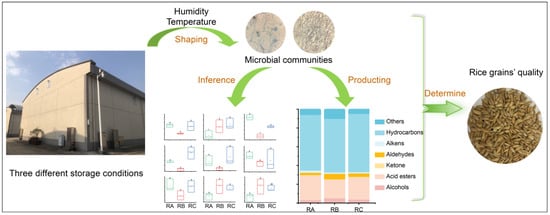Deciphering the Microbiological Mechanisms Underlying the Impact of Different Storage Conditions on Rice Grain Quality
Abstract
Share and Cite
Qiu, Z.; Wu, F.; Hu, H.; Guo, J.; Wu, C.; Wang, P.; Ling, J.; Cui, Y.; Ye, J.; Fang, G.; et al. Deciphering the Microbiological Mechanisms Underlying the Impact of Different Storage Conditions on Rice Grain Quality. Foods 2024, 13, 266. https://doi.org/10.3390/foods13020266
Qiu Z, Wu F, Hu H, Guo J, Wu C, Wang P, Ling J, Cui Y, Ye J, Fang G, et al. Deciphering the Microbiological Mechanisms Underlying the Impact of Different Storage Conditions on Rice Grain Quality. Foods. 2024; 13(2):266. https://doi.org/10.3390/foods13020266
Chicago/Turabian StyleQiu, Zhuzhu, Fenghua Wu, Hao Hu, Jian Guo, Changling Wu, Peng Wang, Jiangang Ling, Yan Cui, Jing Ye, Guanyu Fang, and et al. 2024. "Deciphering the Microbiological Mechanisms Underlying the Impact of Different Storage Conditions on Rice Grain Quality" Foods 13, no. 2: 266. https://doi.org/10.3390/foods13020266
APA StyleQiu, Z., Wu, F., Hu, H., Guo, J., Wu, C., Wang, P., Ling, J., Cui, Y., Ye, J., Fang, G., & Liu, X. (2024). Deciphering the Microbiological Mechanisms Underlying the Impact of Different Storage Conditions on Rice Grain Quality. Foods, 13(2), 266. https://doi.org/10.3390/foods13020266






